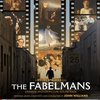ENTRE DOS AGUAS is considered a masterpiece of flamenco and is the most popular and well-known work by Paco de Lucia, both nationally and internationally. However, it was not a written composition, but an improvisation that Paco was asked by producer José Torregrosa at the time of recording, as he felt the album was incomplete. Apparently Paco used other references to improvise the song, such as the Las Grecas song Te estoy amando locamente and the Los Marismeños song he co-wrote Caramba, carambita, the latter showing a clearer resemblance.
This rumba has the formal character of a theme with variations (falsetas in this case). The arrangement by Walter Abt underlies the original solo part with rhythmic chord sequences and functional basses that fill it out. Thus, this version emancipates itself from the original single line of Paco, which requires a second rhythm guitar. However, this can also play rhythmically with this solo version at any time, as the rumba pattern in bars 5-12 explains in detail. The chord symbols presented in full also lead an optional rhythm guitar as well as the participation of a bass throughout the piece. Only exceptional talents like the greatest guitar virtuoso of the century Paco de Lucia are able to eloquently play the complex monstrous scales in the fast second part, especially in bars 125, 133, 249-275, using technical crossfire. This arrangement offers alternative, player-friendly various variants, and includes helpful fingerings for the left and especially for the right hand. Two identical editions have been written - one in musical notation with fingerings and chord symbols, and one in guitar tablature with note values, fingerings and chord symbols. This arranged version is also available as mp3 for solo guitar and bongos performed by Walter Abt and Pabhupada Plazaola.
You can select between two different versions with light versions for scales:
- score for solo guitar with fingering
- guitar tab with fingering
ENTRE DOS AGUAS gilt als Meisterwerk des Flamencos und ist das beliebteste und bekannteste Werk der Ausnahmeerscheinung von Paco de Lucias, sowohl national als auch international. Es war jedoch keine ausgeschriebene Komposition, sondern eine Improvisation, um die Paco von Produzent José Torregrosa zum Zeitpunkt der Aufnahme gebeten wurde, da er das Album für unvollständig hielt. Anscheinend verwendete Paco andere Referenzen, um das Lied zu improvisieren, wie das Lied Te estoy amando locamente von Las Grecas und das von ihm mitgeschriebene Lied Caramba, carambita von Los Marismeños, wobei bei letzterem die Ähnlichkeit deutlicher zu erkennen ist.
Dieser Rumba hat den formalen Charakter eines Themas mit Variationen (Falsetas in diesem Falle). Das Arrangement von Walter Abt unterlegt der ursprünglichen Solostimme ausfüllende rhythmische Akkordsequenzen und Funktionsbässe. Somit emanzipiert sich diese Version vom Single-Line- Original Pacos, die zwingend einer zweiten Rhythmusgitarre bedarf. Diese kann jedoch auch zu dieser Soloversion jederzeit rhythmisch dazu spielen, so wie es das Rumba-Pattern in den Takten 5-12 ausführlich erklärt. Die komplett dargestellten Akkordsymbole führen auch eine optionale Rhythmusgitarre wie auch die Mitwirkung eines Basses durch das gesamte Stück. Nur Ausnahmekönner wie der größte Gitarrenvirtuose des Jahrhunderts Paco de Lucia vermögen über ein technisches Lauffeuer, die komplexen monströsen Läufe im schnellen zweiten Teil, speziell in den Takten 125, 133, 249-275 eloquent zu spielen. Dieses Arrangement bietet hierzu mehrere alternative spielerfreundliche Varianten an, und beinhaltet hilfreiche Fingersätze für die linke und vor allem für die rechte Hand. Es sind hiervon zwei identische Ausgaben verfasst, - einmal in Notenschrift mit Fingersätzen und Akkordsymbolen, sowie einer Gitarrentabulatur mit Notenwerten, Fingersätzen und Akkordsymbolen. Diese arrangierte Version ist auch als mp3 für Sologitarre und Bongos erhältlich, gespielt von Walter Abt und Pabhupada Plazaola.
Sie können hier unter zwei unterschiedlichen Versionen auswählen:
- für Gitarre solo als Notenausgabe
- für Gitarre solo in Tabulatur mit Notenwerten und Fingersätzen



 Entre dos Aguas, Paco de Lucia, Audio
Entre dos Aguas, Paco de Lucia, Audio Requiem Gitarrenduo SCORE Partitur Notes/Tabs (PDF-Download)
Requiem Gitarrenduo SCORE Partitur Notes/Tabs (PDF-Download) ROMA Vicente Amigo Guitar solo Score/Tabs (PDF-Download)
ROMA Vicente Amigo Guitar solo Score/Tabs (PDF-Download)









